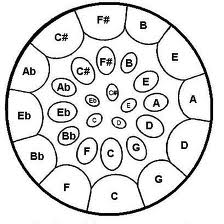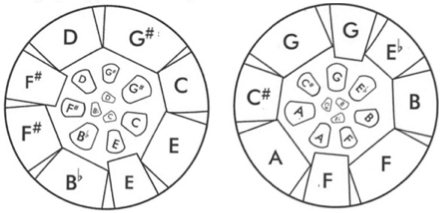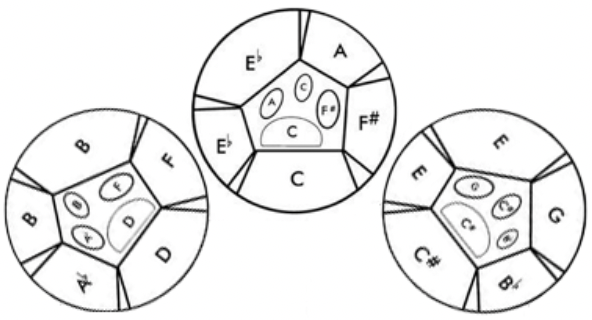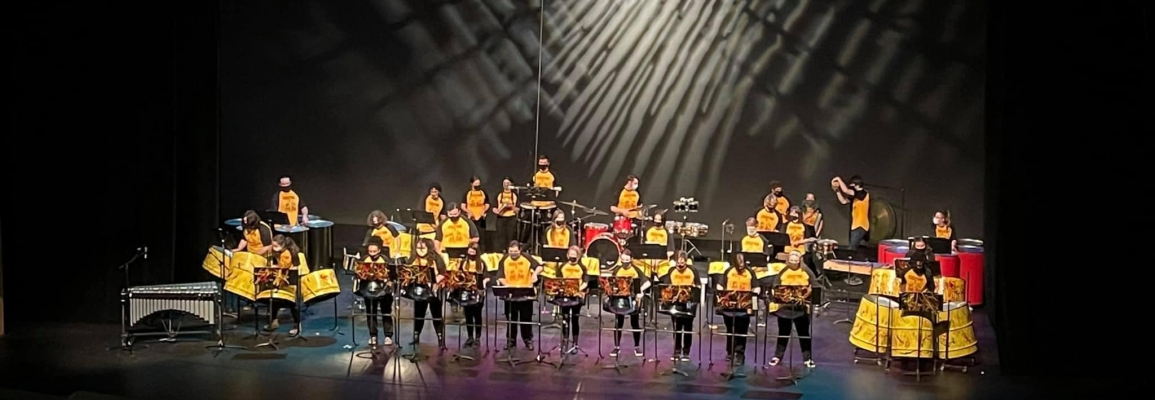When/Where
Auditions are held the Sunday before classes start from 5-7 pm in BMC room 119. Results will be posted (through email) by the first class period. We meet for regular rehearsals on Fridays from 2:00-4:00 pm in Room 119.
Requirements
Auditions are open to students of any major and experience level. Most of our members have no steel pan experience prior to joining the band. The only requirement is the ability to read music, because we will be quickly learning new repertoire every semester.
Audition Process
There will be two separate parts of the audition: one for returning members, and one for new members. First, the returning members will play their prepared materials together as a group. Then, new members will be taught a tune. The auditions are not meant to be stressful, only to show whether the player has a general understanding of music and rhythmic pulse, and the ability to adapt to a new layout. This band plays fun, energetic music, so we are looking for people who can dance and have a good time!
Registration
Everyone who is offered a position in the band must register for the course, MUS1135 (you do not need to register until after you've been offered a position. You may register in advance, but if you do not make the ensemble, you will need to drop the course).
Music
During the semester, we will use music folders that are stored on a black bookshelf in the Panyard. Feel free to look through them to explore some of our repertoire.
Choosing an Instrument
Our band has seven different voices, and they each serve a different function in the band. This list will give you an idea of the different pans that are available to play during the semester. For the audition, the new players will have a choice of lead, double seconds, guitar, and six bass. After the audition, you may end up playing a different instrument, so don’t get too attached!
- Lead aka tenor (treble clef): one pan, highest, usually plays melody
- Double Seconds (treble clef): two pans, widest range, med-high range, can play melody or accompaniment
- Double or Triple Guitar (bass clef): two or three pans, mid range, usually plays accompaniment/strumming patterns, very rhythmic
- Cello (bass clef): three pans, mid range (very similar to guitar, sometimes interchangeable), plays accompaniment sometimes, often plays melodies as well
- Tenor Bass (bass clef): four pans, low range, plays bass lines one octave up from six bass
- Six Bass (bass clef): six pans, lowest range, plays bass lines
Practicing
Although it's not necessary for new band members, if you would like to practice before auditions, contact me and I will connect you with a current band member to help you get set up. Evenings are usually the best time to practice.
Setting Up Your Instrument
Be very careful when setting up the instruments, because accidently hitting them against something can knock them out of tune.
Lead:
Grab a black stand from the wall (they are hanging upside down near the double doors that connect to 119). The leads are on the pan shelf all the way on the right side. Take one and carefully place the two wires on either side into the tops of the sides of the stand.
Double Seconds:
Grab two stands from the wall (they are hanging upside down near the double doors that connect to 119). The double seconds are on the right half of the pan shelf, but closer to the center than the leads. There are four sets total: two sets of long skirts, and two sets of short skirts. Use a pair with shorter skirts. Each pair should be labeled Left and Right (be sure to practice with them in that order). Take one and carefully place the two wires on either side into the tops of the sides of one of the stands. Do the same with the second pan.
Guitar:
Grab three stands from the wall (they are hanging upside down near the double doors that connect to 119). The guitars are on the left half of the pan shelf. There are two sets of three pans. Either set is fine, just make sure to check the labels for Left, Center and Right (practice with them in that order). Take one and carefully place the two wires on either side into the tops of the sides of one of the stands. Do the same with the other two pans.
Bass:
There are two sets of basses in the Panyard under the pan shelf. There is a red set and a black set. Use the red set. They are on wheels, so they should be easy to roll out (please be careful so they don’t tip over!) You will stand in the center, and set them up in a circle around you. Start in front of you at 1:00 with the pan labeled 1. Follow with the other pans clockwise in order 1-6 until you are surrounded. Pan 6 will end up in front of you (11:00) so that your front two pans will be 6 and 1 next to each other from left to right. Make sure the letters are positioned upright from your perspective as you turn around and look at each pan.
Mallets:
There is a yellow toolbox of mallets in the Panyard. There should be at least one set of appropriate mallets for each of the four instrument types. They should look similar to this:

Layouts:
Even if you can’t get to the Panyard in person over break, you can still practice by learning the layout of your pan. Here are the layouts of some of the instruments we will use during auditions:
Lead/Tenor:

Double Seconds:

Triple Guitars:
You can also download THIS APP (or similar) to practice on your phone or tablet.
Feel free to contact me if you have questions or concerns. Good luck, and have fun!
INFO SHEET - Please fill out when you arrive to the audition.
